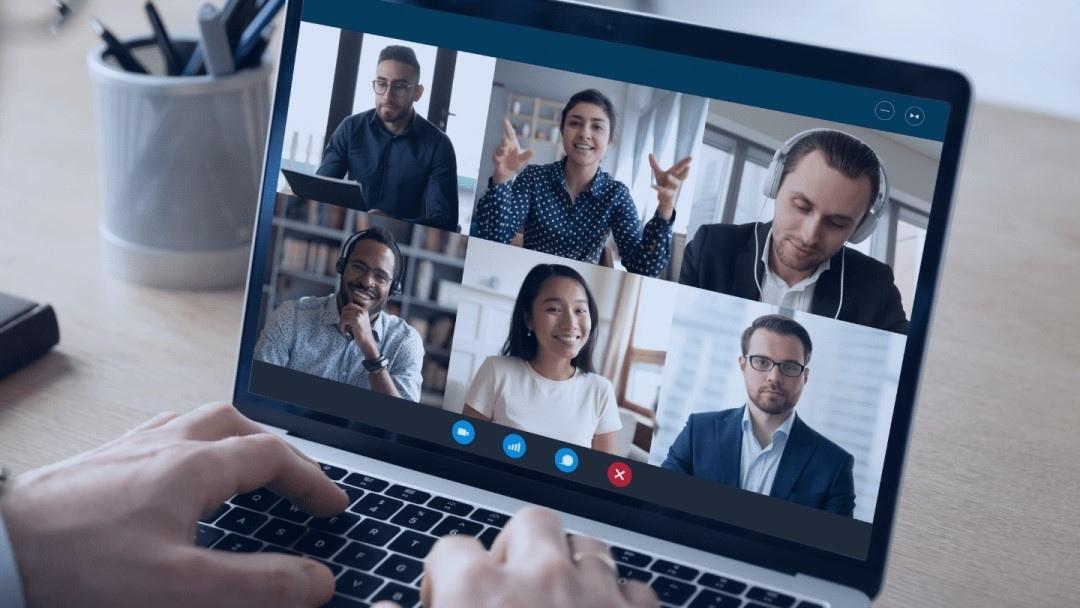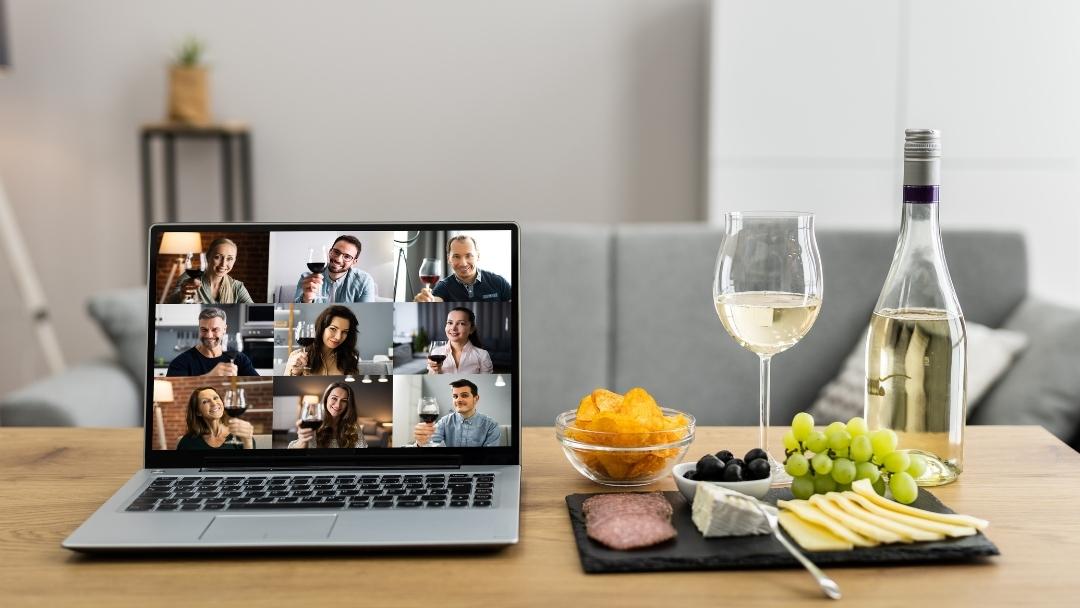What are Hybrid events?
There is a mix of audience participation, but a sizable portion of your audience participates virtually. This could be a live session that is live-streamed to a larger audience, or it could be an exhibition where suppliers have a presence both online and offline. Hybrid events are, quite simply, a mix of live and virtual events.
Why do you need this?
If people want to interact in person, a hybrid event allows them to do so. A hybrid events platform allows people who would otherwise be unable to attend due to health concerns or travel constraints to participate virtually.
What tools do I need to run a Hybrid event?

You may be familiar with these tools depending on the nature of your event. However, each one of these tools addresses a critical aspect of your event and will ensure the success of your virtual event.
A platform for virtual events
Your new virtual location – where attendees will interact with your content, sponsors, and one another. The expertshare virtual events platform features a host of powerful tools to create a successful hybrid event.
Tool for networking and community building
Make combined events a reality by establishing valuable one-on-one connections.
Tools for live streaming
Your content (and how you present it) is your event; make sure you know which tool is best for you.
Tools for participant engagement
To keep attendees interested and engaged, include an element of fun and activity.
While the current surge in interest in hybrid events is due to travel restrictions and social distancing, people will continue to have varying desires for meeting in person, whether it is due to safety, schedule, or travel reasons.
Or perhaps they are willing to take part in your event but are not yet committed enough to take time off from work and book a flight. The brilliant thing about a hybrid event is that it allows you to create a specifically aimed experience for industry attendees who attend in person, as well as an interactive, appealing experience for everyone who is getting to know you.
A hybrid event, in essence, allows you to expand your attendee pipeline by providing a reduced effort and committed way for people to learn about — and take interest in — your organisation. For this purpose alone, our industry should take into account hybrid events as the future of events, not as a short term solution to a pandemic.
Implications for audio-visual
A hybrid event involves many audiovisual considerations. It is necessary to think about it according to the people in the room (background music, visual of the event, microphone of the animation…) but also according to the virtual platforms (transmit the sound in an interesting way for the people who attend the event from their home).
This is a big challenge of the hybrid event. It requires a lot of thought and discussion with professionals to ensure that the event is accessible, but most importantly, enjoyable for everyone. Being well prepared in advance can avoid technical disasters.
Current sitation with events
Since March 2020, we have seen many events go virtual. Trade shows, sporting events, concerts and other physical events have been interrupted during the COVID-19 pandemic. Some events have been transformed through digital. Others were postponed or cancelled.
But now that millions of people are vaccinated, companies are starting to see the light. In fact, Google and Facebook have just announced that their employees are returning to the office. 100% telework is not an option considered by these giants. That’s why we can think that it will be the same for most companies.
In this way, new perspectives are underway to bring physical events back to the heart of communication strategies. As virtual events have gained a lot of ground in the event industry over the last year, a number of advantages and best practices have emerged.
With this in mind, marketers are now planning hybrid events for the future. In fact, Google has announced new approaches to working in the office. In particular a hybrid approach to work for more flexibility of its employees.
The objective of these hybrid events is to converge physical and virtual events. This practice is also called “phygital” events, which is a contraction of the words physical and digital. Hybrid events are therefore the new trend for the coming months and years.
Keeping the benefits of virtual events

So how can organizers keep the benefits of virtual events for their physical events? We present the trends of hybrid events as well as concrete examples. With a hybrid event, the benefits of digital experiences are combined with physical events.
More concretely, hybrid events include a physical presence at a venue and a live virtual presence. This fusion of experiences allows the audience, wherever they are, to participate, learn, interact and engage. For example, a television show can be considered a hybrid event. On one side, we have physical people on a TV set, on the other side viewers behind their screens.
Generally, this fusion of experience is made possible by the implementation of a digital event platform. These platforms are the new communication channels for corporate events. Your event relies on the internet and video streaming to broadcast your content to a more distant audience.
However, there is no set rule for what a hybrid format should be. These events are adapted to your audience and your objectives. Here are some of the advantages:
AN INTERNATIONAL SCOPE
It goes without saying, as we have seen with purely virtual events, that the Web presents an opportunity to go anywhere in the world. We are talking here about an audience that can be international, but this is also the case for the speakers. We can invite speakers or special guests to our hybrid event, without having to pay for airfare and accommodation.
CONVERT THE EVENT INTO WEB CONTENT
The hybrid formula makes it possible to record the event without having to make any additional efforts. The photos, videos (capsules or clips of the event – performances, animations…) and surveys can be directly transformed and used as content for the website, social networks, etc. Compared to a 100% face-to-face event, the entire event can be reused afterwards.
COLLECT CUSTOMER DATA
More and more companies are turning to “first party data,” the in-house management of customer databases. Not only does the hybrid event allow for online audience data to be stored, but it also makes it easy to conduct surveys and collect information through the company’s web platforms, which speeds up the collection of information for the company’s database. This is also an aspect that can facilitate the sale of sponsorship: a concrete information base of people attending the event.
EVENT DYNAMISM
The hybrid event allows you to benefit from the dynamism of a face-to-face event: a crowd, people, applause, enthusiasm, and the excitement of the presenters, which can be felt even on the screen. This is an advantage to exploit.
AUDIENCE CHOICE
The public has the opportunity to choose between an on-site presence or a virtual presence. This option is well received by the guests who sometimes have personal obligations (children, complex schedule, appointments). The public can thus choose their involvement in the event according to their desires and practical preferences.
The challenges of hybrid events
We often hear that hybrid events are the best of both worlds. However, we must not forget the challenges and implications they bring.
BUDGETS
By splitting the event’s audiences, one can necessarily expect to increase the budget. In addition to the cost of hosting people in the room (drinks, appetizers, furniture, service personnel…), you have to think about the technological aspect (equipment, technical assistance and support, webcasting platform…).
MANAGING TWO AUDIENCES
Another challenge is not to leave out one of the two audiences in the animation of the evening. The event must be made dynamic and relevant to all, and this throughout the event. Of course, entertaining an audience in front of a camera or on a stage is not the same as in person. You have to find a balance with techniques adapted to the reality of the hybrid event.
INTERACTION
For a hybrid event to be relevant, it must be interactive. It must include audience participation. Although this is sometimes easier in person, the wave of virtual events has recently shown us that it is just as possible in virtual (networking, surveys, public comments…). Now, the two audiences need to be brought together to ensure interaction between the two, in order to create a certain fusion and synergy. We can think of games, audience voting, some technological tools…
Why organize a hybrid event?
First, we explained why physical events are coming back soon. Then, what a hybrid event represents in the current context. Then, it is appropriate to first determine the advantages of digital events. Then, to see how these advantages can be combined with your physical events.
Here are the advantages of digital events:
- increase the audience of your event
- ensure greater networking for your participants
- collect feedback more easily
- generate leads
- provide unique experiences
- save money
- boost your participants’ engagement
- reduce your ecological footprint
- measure your KPI’s
- Enhance your sponsors
All these benefits have been observed in the last few months. Of course, virtual events cannot replace a physical event. Events are about bringing people together. The relationship is the strongest value of this business.
That’s why these advantages will be combined with physical events. But how? We observe some limitations to physical events. We list them below. These limitations can be overcome by digital solutions:
- the space of receptive venues can be limited due to sanitary measures.
- the flexibility of telecommuting may prevent the gathering of all participants
- corporate budgets may be reduced
- many people may still be reluctant to travel and gather in groups
- logistical complexities can be a barrier to organizing events
- certain event profiles can taint a company’s CSR
- the ROI of these events is more difficult to identify
Conclusion:
Leveraging the advantages of digital to build hybrid events will allow event organizers to properly maintain their event communication strategies. Communication is a way to make your event known. Prepare this communication at the time of the elaboration of your strategic objectives. The creation of content and defining its applications is a work of anticipation. The more anticipation you can build, the more successful your hybrid event will be.






